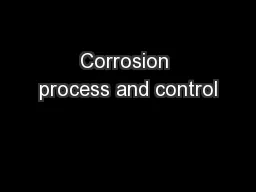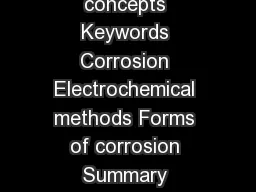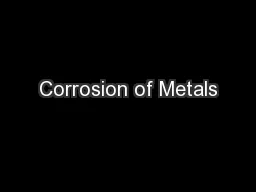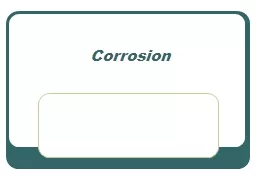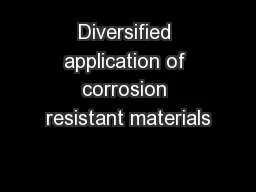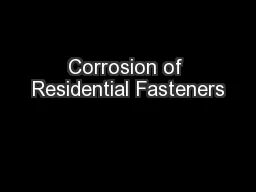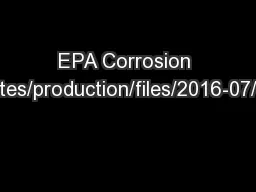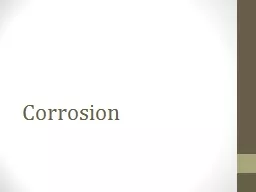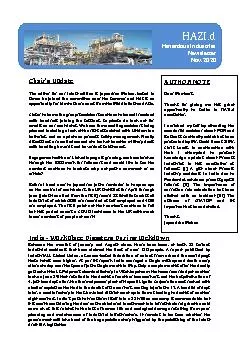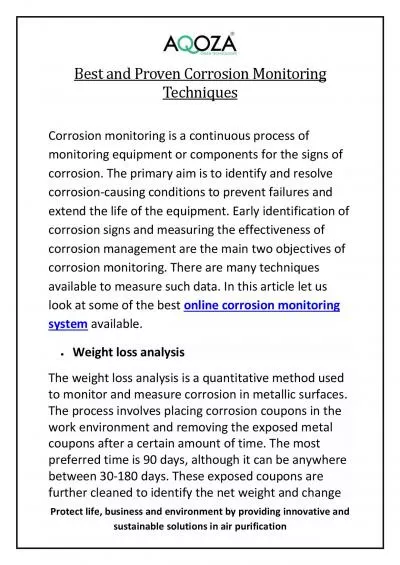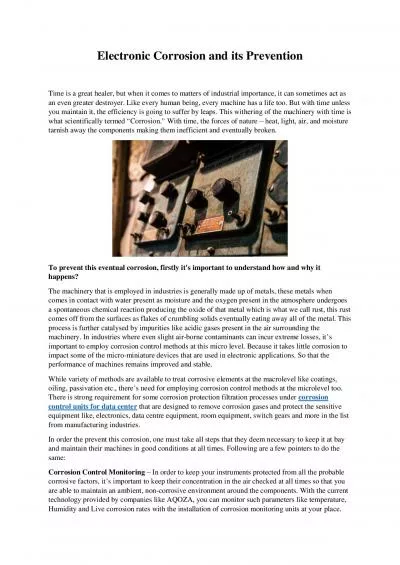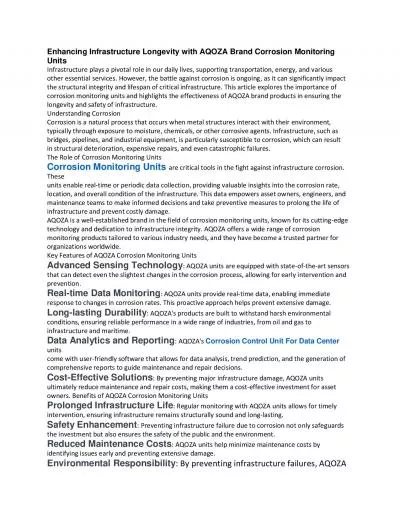PPT-Corrosion process and control
Author : aaron | Published Date : 2017-04-05
TKK2289 1516 Semester genap Instructor Rama Oktavian Vivi Nurhadianty Email ramaoktavian86gmailcom Office Hr T 1112 Th 08 10 1315 F 0810 1315 Corrosion
Presentation Embed Code
Download Presentation
Download Presentation The PPT/PDF document "Corrosion process and control" is the property of its rightful owner. Permission is granted to download and print the materials on this website for personal, non-commercial use only, and to display it on your personal computer provided you do not modify the materials and that you retain all copyright notices contained in the materials. By downloading content from our website, you accept the terms of this agreement.
Corrosion process and control: Transcript
Download Rules Of Document
"Corrosion process and control"The content belongs to its owner. You may download and print it for personal use, without modification, and keep all copyright notices. By downloading, you agree to these terms.
Related Documents

